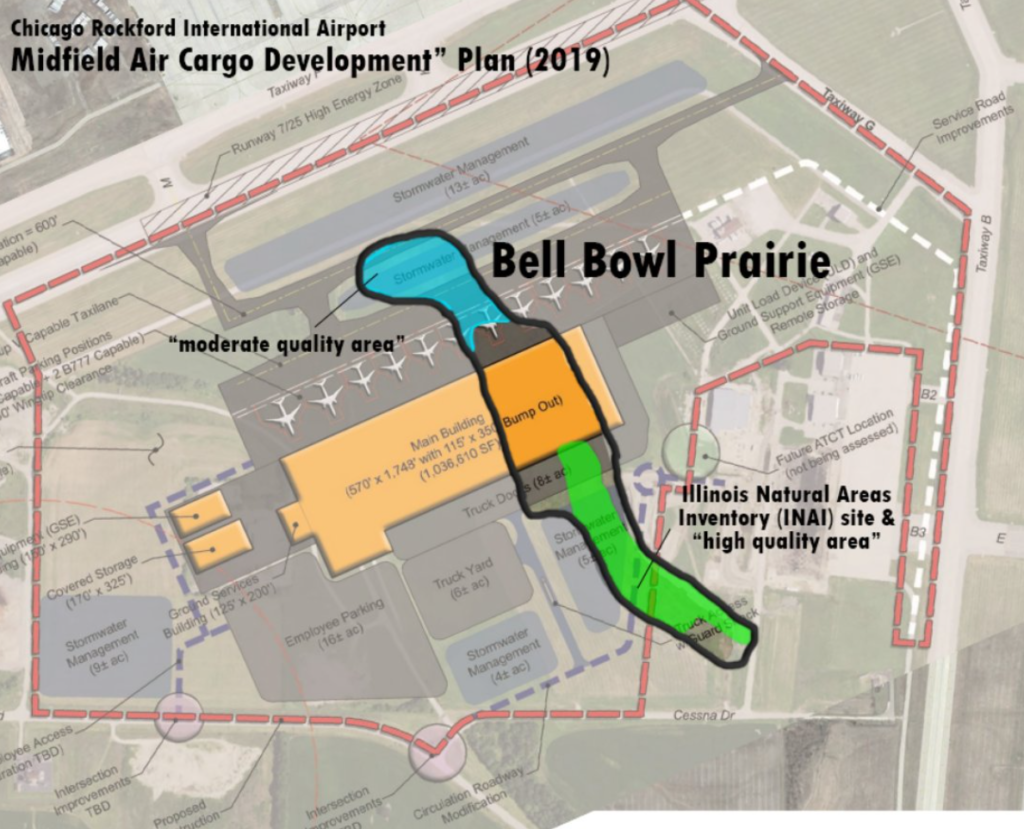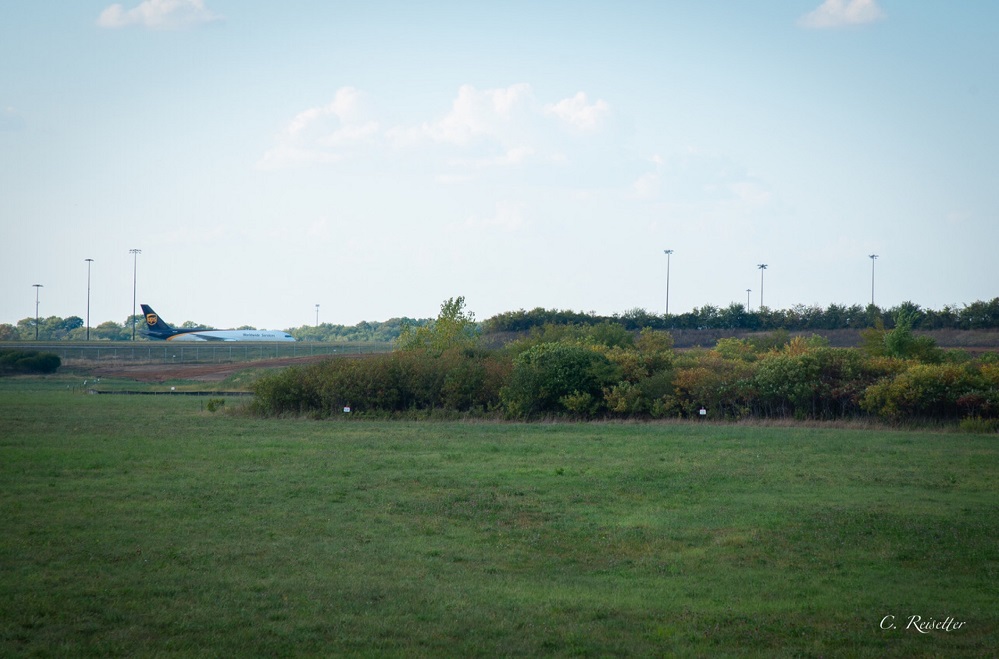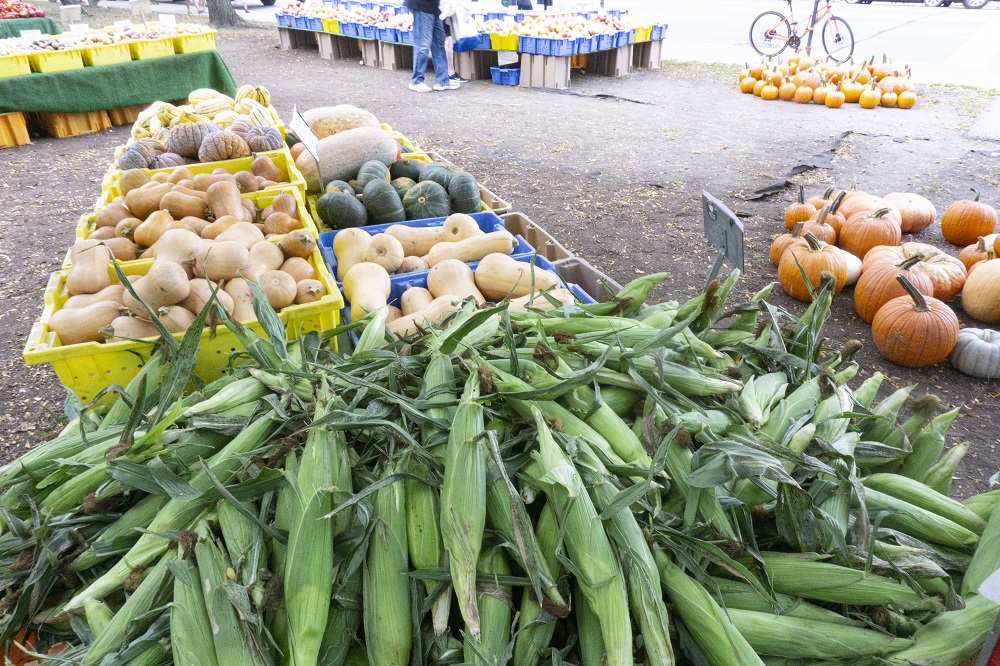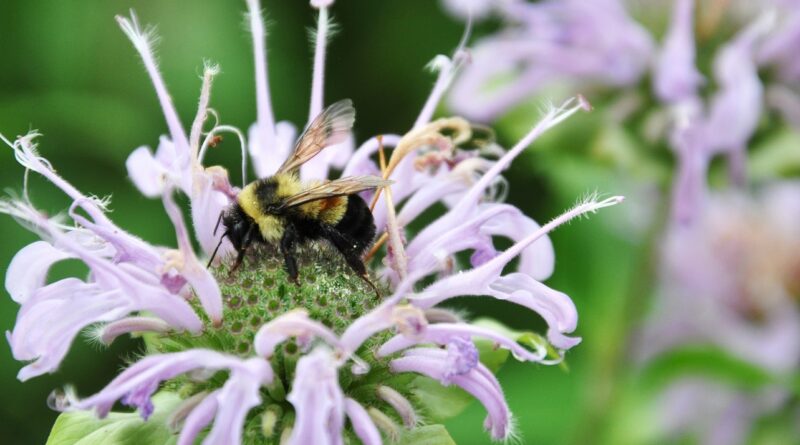Can One Bee Rescue a Valuable Remnant Prairie?
Podcast: Play in new window | Download (0.0KB)
Subscribe: Apple Podcasts | Spotify | Android | iHeartRadio | Podchaser | Email | TuneIn | RSS | More
(October 3, 2021) Can you call Illinois “The Prairie State” if it doesn’t have any prairies? I’m using hyperbole, to be sure. But it raises an important point about preserving our natural heritage. We have destroyed or transformed most of those acres. Now, another battle is being waged in Rockford over a tiny prairie parcel. Will we protect our remaining lands? Or will we continue to pave everything in site? Will concerned citizens make a stand? Or can one bee rescue that valuable remnant?
This story starts with the Bell Bowl Prairie in northern Illinois. Unfortunately, it sits right next to the Chicago Rockford International Airport. In fact, you could say that it is almost surrounded by the airport. The Natural Land Institute (NLI) describes it as “a significant natural dry gravel prairie community that supports rare and endangered species.” It is listed as a Category I Illinois Natural Areas Inventory (INAI) site. That means the site contains some of the highest quality natural plant communities found anywhere in the state of Illinois. The entire prairie is 25 acres, with 4.88 acres listed as the INAI.

Threat from expansion
However, the Greater Rockford Airport Authority plans to expand their facilities. That would wipe out a good portion Bell Bowl Prairie. In 1968, George Fell, founder of NLI, fought against an earlier expansion. This time, John White stepped up. He designed and directed the Illinois Natural Areas Inventory, which identified Bell Bowl Prairie as outstanding. You can read his words here. He writes,
Bell Bowl Prairie is a rare treasure. And fragile: if you try to move it, it will disintegrate and die away, replaced by weeds.
Meanwhile, naturalist Cassi Saari pens some blunt words of her own about the issue.
There is less than one-hundredth of one percent (0.01%) of prairie remaining in the state of Illinois. Gravel hill prairies such as Bell Bowl represent a tiny fraction of that: 148 acres in total across the entire state in various states of quality. Losing 5 acres of high quality gravel hill prairie is an unacceptable loss that cannot be mitigated with any effort known to science.
ss
Enter the rusty patched bumble bee
However, nature can throw you a curve ball. Sometimes in a good way. Illinois Department of Natural Resources (IDNR) staff found a rusty patch bumble bee (Bombus affinis) earlier this year. Can one bee change everything? For now, that discovery is keeping the bulldozers at bay. Why? That bumble bee is federally endangered. But that’s not the only rare living being in Bell Bowl. According to Saari, the state endangered prairie dandelion (Nothocalais cuspidata) and large-flowered penstemon (Penstemon grandiflorus) are also present.

So, for now, the airport’s plans have been put on hold. But that will end on November 1. Can the expansion be stopped by then? Environmental groups are rallying around the beleaguered prairie. There have been public meetings and a lot of social media attention.
You can sign a petition to Governor J.B. Pritzker here.
Today, we welcome Kerry Leigh, Executive Director of the Natural Land Institute. Naturalist, poet and communicator Robb Telfer joins her. Watch the live stream. And please send us your comments.
Weird end to farmers market season
Bob Benenson from Local Food Forum returns to the show today. He last visited us in July of this year. Bob reports on the local food scene, as the name of his blog suggests. Today, he reports on what he calls a “weird season overlap.” Check out the photo. He writes,

We’re seeing season overlaps that I don’t think I’ve seen before. One photo kind of sums up the story: Sweet corn next to winter squash with pumpkins and apples in the background. There are others with more tomatoes than we’re used to in October, and summer fruit (raspberries in October?)
Also, Bob tells us which markets are still open and when they will shut down for the season. While it’s a beautiful time of year in Chicago, it’s also a sad one. Fortunately, some markets will extend their seasons into November. We’ll provide the information on today’s show.


